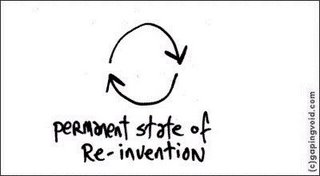Multi user communication
In the XMPP parlance, MUC refers to "Multi User Chat". The specification foreword highlights the textual aspect of the communication by referring to other similar text based systems.
Traditionally, instant messaging is thought to consist of one-to-one chat rather than many-to-many chat, which is called variously "groupchat" or "text conferencing". Groupchat functionality is familiar from systems such as Internet Relay Chat (IRC) and the chatroom functionality offered by popular consumer IM services.
In the wake of the growing use of XMPP as an application platform, I am convinced XEP-0045 go far beyond text chat rooms. The specification can easily be extended beyond text to any form of conversation space involving several parties. The word "room" is used throughout the document, and may appear somewhat linked to "chat room". But, leaving this restrictive interpretation aside, we can easily see that almost every concepts used can be applied to the wider scope of conversation spaces.

The first important aspect of the specification is the capacity of its definitions to be applied without changes outside the limitative text communication scope.
The specification provides an exhaustive list of spaces types, such as public (Open, Public) or private (Members-Only, Hidden) spaces, identified (Non-Anonymous) or anonymous (Fully-Anonymous) spaces, temporary (Temporary) or permanent (Persistent) spaces. One can refer to the specification for an exhaustive description of these types. The important point being that these types of spaces are somewhat independent of the actual means of communication used inside the space. They would apply equally well for text, voice or video, or any combination thereof.
Similarly, the specification goes to great length at defining the roles (Moderator, Participant, Visitor) and affiliation (Owner, Admin, Member, Outcast) any participant in a conversation space may acquire, as well as the rules and privileges a compliant implementation must provide in relation to these roles or affiliations. Once again, none of these definitions are specific to text communication. They remain valid for any kind of conversation space.
The second important point is the reliance on presence for the actual conversation spaces functioning. Entering or leaving a space is entirely driven by presence. And the XEP takes great care at defining the associated presence broadcast behavior.
The third important point is the definition of all the management actions that may be associated with a conversation space. For a space owner, it defines a wide range of configuration options. For a space administrator it allows to modify persistent information about user affiliations (e.g., banning) and to grant or revoke moderator privileges. Here again, there is nothing specific to text only communication.
The last important point lies in the possibility to use an XMPP address to refer to any conversation space, and any participant in the space. This fined grained addressing is the key to the extensibility of the "Multi User Chat" to "Multi User Communication". It is easy to imagine that a multi-media conversation space will use Jingle to extend its media capabilities beyond text only. As the conversation space is presence enabled, it will broadcast its capabilities to any client entering the space, while receiving the client's one. Similarly, the space will also broadcast the new participant's client capabilities to all existing participants, thus allowing multi-media private conversations to take place. A Jingle enabled client would then be able to negotiate a voice or video session with a multimedia space seamlessly. It does not matter if the multi-media implementation is entirely provided by the MUC service, or handed over to specialized audio or video bridges.
In the end, the MUC specification is a very important enabler for building advanced communication application, beyond text only. It provides a ready made framework to manage conversation spaces and participants. It is another perfect example of the maturity of the protocol and of the growing importance of presence in application. As I have mentioned earlier, XMPP has reached a stage allowing many application usages from its existing features set. It is just a matter of imagination and creativity…
Technorati Tags: XMPP, Jabber, Jingle, Conversation space, Presence, Antecipate




<< Home